Blockchain 101: What actually is Ethereum?
Blockchain 101: What actually is Ethereum?
Introduction
If you've been following the TP ICAP Digital Assets business and the wider sector, its not too much of a stretch to assume that at the least you've heard of Bitcoin and likely Ethereum.
You've hopefully got an idea of what Bitcoin is due to our previous writings, but you may still be wondering what Ethereum is? Maybe you've just heard its name or maybe you know it as the second largest Cryptocurrency, but Ethereum is so much more than just a secondary to Bitcoin. In fact, its an entirely different beast.
In this article I will attempt to explain (hopefully in a clear fashion) what Ethereum actually is, is capable of and how that all works. If you haven’t got a decent grasp on how blockchains function, how different consensus mechanisms work and what Bitcoin’s value proposition is, I’d recommend first acquainting yourself with these foundations as doing so will make understanding Ethereum and other Cryptocurrencies a hell of a lot easier.
Some Resources I’d recommend if not are;
-
How do Bitcoin and blockchains function — https://www.youtube.com/watch?v=bBC-nXj3Ng4
-
The value proposition for Bitcoin — https://www.matthuang.com/bitcoin_for_the_open_minded_skeptic
-
The Bitcoin Whitepaper — Part Philosophy, part technical document explaining how Bitcoin functions by its pseudonymous creator Satoshi Nakamoto — https://www.modeapp.com/bitcoin-whitepaper
So, what is Ethereum?
The history of Ethereum starts back in 2013, when a little-known 19-year-old Bitcoin enthusiast and founder of Bitcoin magazine became disgruntled with the Bitcoin community's limited view of the blockchain, beyond that of peer-to-peer digital value transactions. So, the 19-year-old in question, known as Vitalik Buterin, decided to branch off and a year later published the Ethereum White paper outlining his vision of a general-purpose blockchain. For those unaware, a whitepaper is a standardized rite of passage for any blockchain network proposal; consisting of a technical and philosophical document laying out the value proposition for a Blockchain protocol with the purpose of helping to attract developers and raise capital to make the network a reality. In it, Vitalik outlined a wider vision for the future of Distributed Ledger Technologies (DLT) in which, Ethereum would operate as a world computer and a “Next generation smart contract and decentralized application platform.”
So, what is meant by a world computer? Getting a bit technical for a moment, in computational theory there is a term known as Turing-complete. Being Turing complete means that your mechanism can run any algorithm you could think of no matter how complex, deep, complicated or long (in terms of code) it is, and no matter how much storage or time is needed to evaluate it. Most modern programming languages are Turing complete and so is Ethereum. However, Bitcoin was intentionally created using a programming language that’s not Turing complete, to mitigate the likelihood of faulty code and so strengthen the system against potential attack. Vitalik saw this choice as a hinderance to the vast potential of what blockchains could achieve, so set about creating Ethereum around a Turing complete code known as solidity.
Turing completeness allows for greater flexibility in what the code is capable of, allowing more complex processes such as smart contracts. Smart contracts (SC) can be likened to a vending machine made of code; you put in an input (£1 For a coke), the machine runs a pre-outlined mechanism and then delivers you an output (gives you the coke). This functionality means that rather than just storing transaction data on-chain, smart-contract blockchains can run and store increasingly complex data and automated processes that once stacked can be used to build DApps or decentralized applications. Ethereum can thereby operate as a system or platform through which all these complex processes can be done on-chain and without the need of trusted central intermediaries to store and secure the data in traditional databases. It's like a settlement layer for all types of data transactions
Smart contracts: Unlimited possibilities
The Smart contract functionality of Ethereum has led to various on-chain innovations and the emergence of new protocol proposals and structures for providing value, that are currently the dominant driver of development and adoption across chains. One of these such emergent asset classes is NFT’s or Non-fungible Tokens, they are an entire topic on their own with various levels of complexity that go far beyond just a fun JPEG that’s somehow worth millions. It just so happens that Digital art is the first and simplest iteration of what NFT’s can do. What they really offer is digital ownership of an asset on the blockchain; that’s any asset that’s non-fungible. Ethereum was the first chain to create NFT’s through proposal ERC-721 for CryptoKitties back in 2017, which actually crashed the network due to the high levels of demand. Ethereum continues to be the number #1 platform for NFT’s and digital asset development, despite other L1 protocols like Solana and Cardano moving into the space.
NFT’s, however, are just one of many niche areas and functions that have emerged out of Layer 1 Blockchains. As mentioned, there are a number of DApps that operate in gambling, gaming, play-to-earn and many more emerging sectors. Then further you have DeFi applications built on Ethereum and other L1’s that use the SC functionality to replicate many of the processes previously exclusive to Traditional Finance such as lending, borrowing, interest-earnings, Liquidity provision (through some pretty interesting new structures), market making, Decentralized asset exchanges and many more. There are many further niche’s that have emerged from the SC capabilities and decentralized nature of Ethereum and other L1’s and likely many more are still to come.
Macro-perspective for Ethereum and Layer 1 Protocols
There are countless theories and perspectives on what the specific value of these networks are and where that value will accrue long-term, but to put it simply these developments reflect a macro-shift in product across all asset classes. When the internet first emerged, people saw it simply as an innovation in communications that would disrupt the phone companies and advertising markets. Very few people saw it for what it became, an upheaval of how information is distributed for all systems and products. People outside the inner sphere couldn’t see the far-reaching implications of the tech until it was too-late, so too are the implications of SC blockchains like Ethereum.
Ethereum and other “Layer 1” Blockchains are generalized open-source software that anyone can build on. This shift in architecture and data distribution is leading to the creation of a new and better Internet/web, commonly referred to as Web 3.0. By building on decentralized SC blockchains the structures and incentives are turned on their head from Web 2.0 (current), where users become data to be exploited, corporations own the platforms and the code is closed off to the public. Instead on Web 3.0, users own their own data, identity is anonymous and hidden by cryptography, the contributors and developers own the platform and the code is open-source for anyone to build on. Ethereum and the other infrastructure elements of this new internet act as open utilities and public goods for anyone to build, create and share value with each other without sacrificing your privacy and becoming the product of large data providers.
As stated, we believe the development of these substructures is the necessary groundwork for a macro-shift in how all assets will be traded in the future. As ultimately, it’s simply a faster, more transparent, more adaptable and more efficient stream for payments, asset and data transactions to be settled through. Whilst the value of many of the assets like art NFT’s and DeFi applications may seem frothy and reflect the nascence of this ecosystem, mature institutions have already begun tokenizing financial instruments and commodities, with Goldman’s, Société General Forge, Santander and the European central bank issuing the first-ever digitized bond via the Ethereum blockchain.
It may seem a long way off, but with the pace of innovation in crypto these days we believe it won't be long before further instruments and commodities become tokenized and secondary markets begin to emerge for these assets. As people on Crypto-twitter love to say, its probably nothing...
Oliver Wink










